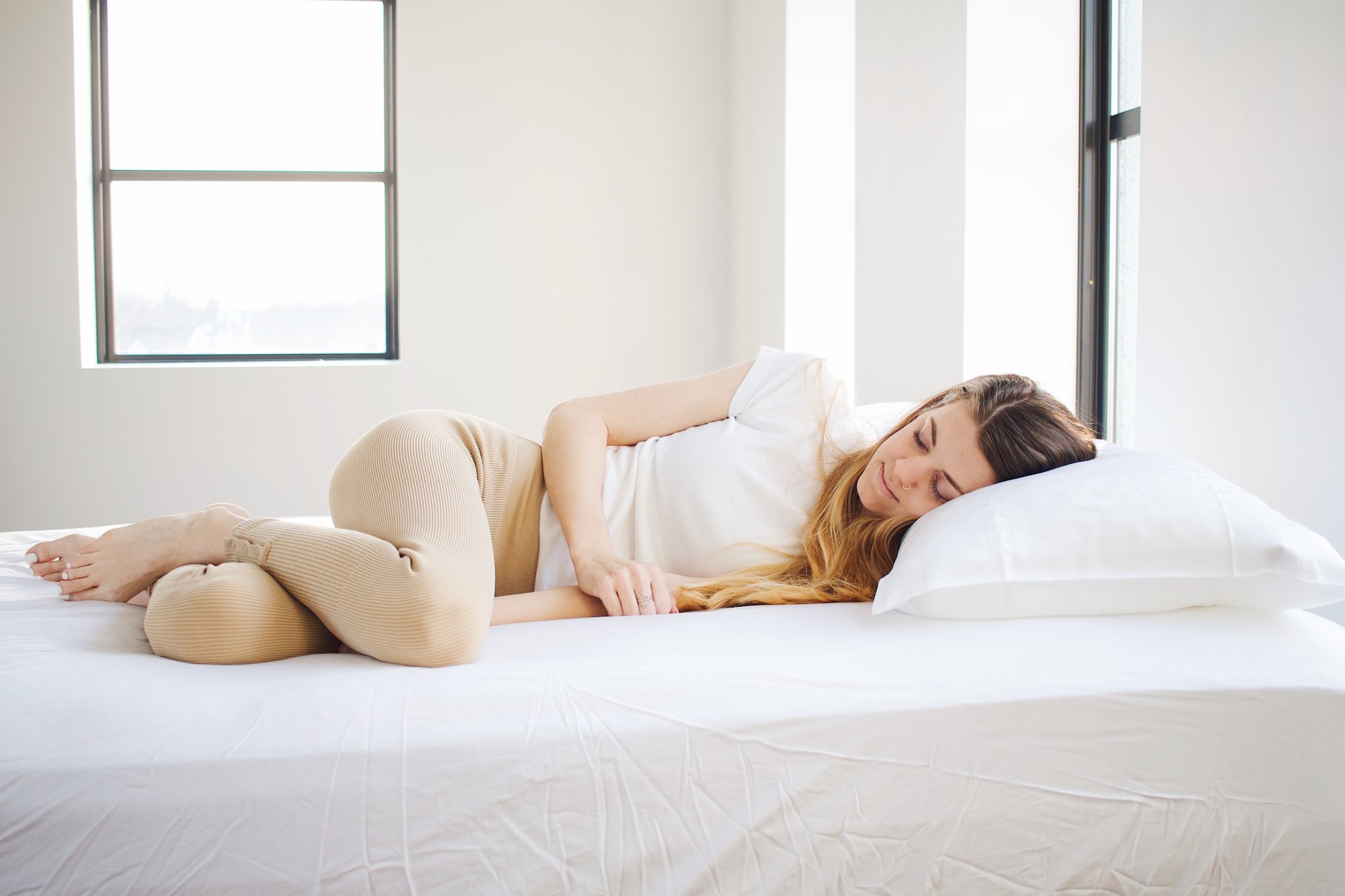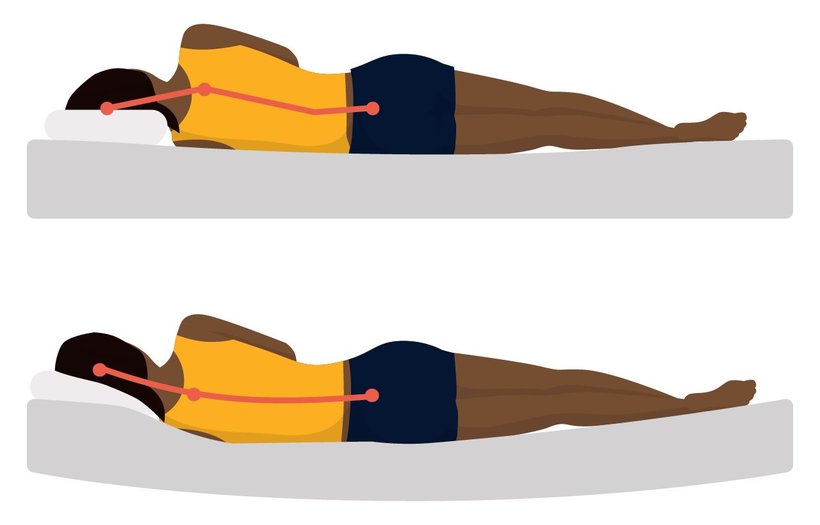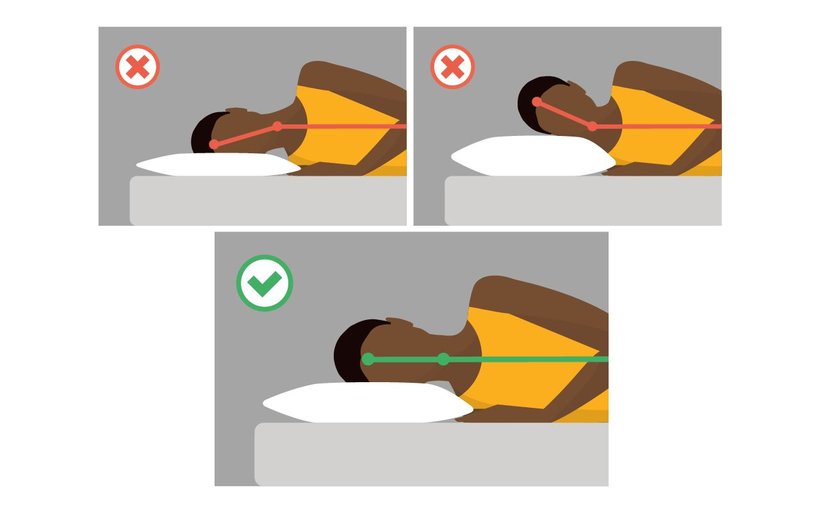
How to Sleep on Your Side
A Side Sleeper’s Guide to the Perfect Mattress and Sleep Setup
The World’s Most Popular Sleep Position
There is no “correct” or “healthiest” sleep position that guarantees comfort and quality rest. However, most people favor one sleep position over the rest: side sleeping. An estimated 74 percent of adults typically sleep on their side.
If you’re not a side sleeper, don’t worry—we have you covered. While Nolah specializes in side sleeper mattresses, we offer a wide range of models,including comfortable options for back, stomach, and combination sleepers. Non-side sleepers can head over to our Sleep Position Guide to learn more about their sleep profile and what they should look for in a mattress.
Side sleepers, keep reading. By the end of this guide, you’ll know exactly what type of mattress suits you best and how to maximize comfort while sleeping on your side.
The Many Benefits of Sleeping on Your Side
Many people never consciously choose their sleep position; they simply form the habit based on what feels right. Others may intentionally train themselves to sleep in a certain position to address a specific need or ailment.
Whether you’ve naturally fallen asleep on your side your whole life, or you recently decided to become a side sleeper, you experience the following benefits of the habit:
Back Pain Relief– Compared to back and stomach sleeping, side sleeping puts the least pressure on your back and strain on your spine. Many sleepers with back pain—especially in the lower back—find relief in the side sleeping position.
Reduces Snoring and Sleep Apnea Symptoms– In the side sleeper position, gravity works in your favor. Your tongue naturally falls to the side, not toward the back of your throat, which can worsen snoring and sleep apnea symptoms for back sleepers.
Helps Digestion– Studies suggest that sleeping on your left side may assist digestion, as gravity helps move waste through the end of the digestive tract.
Relief for Acid Reflux and GERD– Sleeping on your side may limit your esophagus’s exposure to stomach acids, preventing acid reflux episodes.
Safe For All Stages of Pregnancy– Doctors typically recommend switching to the side sleeping position during the third trimester of pregnancy, as it increases circulation.
Featured Mattress
Nolah Evolution 15" Hybrid

Our best-selling and most luxurious mattress pairs zoned AirFoam® HD with HDMax™ Tri-Zone™ coils, providing unrivaled responsiveness and targeted support.
Addressing Side Sleeper Vulnerabilities
Side sleeping is perfectly healthy, and it comes naturally to most sleepers. However, spending eight straight hours in any position can cause discomfort. Knowing the vulnerabilities associated with the position can help mattress shoppers identify what mattress features they need to counteract these concerns. Aside from selecting the ideal side sleeper mattress, you can strategically place pillows to add extra comfort and support.
1) Spinal Alignment
The side sleeping position doesn’t put pressure on the surface of your back, making it a good fit for people with back pain. However, side sleepers still need to think about their spinal alignment.

Concern
- In this position, your lower shoulder, hip, and knee are the heaviest parts of the body that rest against the mattress. Without proper support, these areas will sink into the mattress, pulling the spine out of line.
- Your spine may also fall out of alignment if your upper hip, pulled down by gravity, rotates toward your mattress.
Solution
- Side sleepers need a mattress that’s soft enough to cushion their joints but firm enough to keep their shoulder, hip, and knee from dipping into the mattress and throwing off their spine’s alignment.
- If your upper hip tends to rotate toward the mattress, you can sleep with a pillow between your thighs or knees to keep your hips stabilized.
Firmness Level Recommendations for Side Sleepers
Side sleepers typically prefer the following firmness levels, depending on their weight: 4 to 7 for sleepers under 130 pounds, 5 to 7 for 130 to 230 pounds, 5.5 to 7 for 230 to 300 pounds, and 6.5 to 8 for 300 to 350 pounds. See our Mattress Firmness Guide for more information.
2) Pressure on Your Shoulder, Hip, and Knees

Concern
- As previously mentioned, sleeping on your side concentrates pressure around the shoulder, hip, and knee that rest against the mattress. Side sleepers often experience soreness and pain in these areas.
- Whether you lie with your legs straight or curled in toward your chest, side sleeping stacks one knee on top of the other. You may feel pressure and discomfort where your kneecaps knock against one another.
Solution
- Side sleepers should look for a mattress with superior pressure relief. Pressure-relieving mattresses redistribute your weight, lowering the peak pressure around pressure points like the shoulder, hips, and knee.
- Many side sleepers find knee pain relief by sleeping with a pillow tucked between their lower thighs or kneecaps. This keeps your knees from touching, distributes the weight of your upper leg, and helps prevent hip rotation.
Pressure-Relieving Mattresses
Nolah AirFoam® contains billions of microscopic air pockets that disperse the load across the surface of the mattress. Thanks to their pressure-relief technology, the Nolah Original, Nolah Signature, and Nolah Evolution have earned recognition as best mattresses for side sleepers from the mattress review experts at Sleep Foundation, Tuck, and Good Housekeeping.
3) It Puts Your Neck in a Precarious Position

Concern
- When you sleep on your side, the width of your shoulders creates space between the surface of the mattress and the base of your neck. Without proper pillow support, gravity will pull your head downward, straining your neck muscles. If you sleep with a pillow that’s too high, it will push your neck in the opposite direction, causing strain and soreness.
Solution
- Side sleepers need a pillow that holds their neck straight and in line with their spine. Your ideal pillow loft (the combination of thickness and firmness) depends on the broadness of your shoulders and how much cushioning you require. Most side sleepers prefer pillows about 5 to 6 inches thick.
Pillows for Side Sleepers
Many side sleepers benefit from adjustable pillows, like our Adjustable Shredded Foam Pillow, that allow them to experiment with different lofts until they find the perfect fit. To learn more about side sleeper neck and head support, check out our guide on the Best Pillows for Side Sleepers.
4) Resting Your Face on Your Pillow Can Cause Wrinkles
Concern
- In the side and stomach sleep positions, a portion of your face rests against your pillow. Your pillow may feel plush and comforting, but if you shift in your sleep, your skin rubbing against the pillowcase can cause irritation and wrinkles.
Solution
- For side sleepers, we recommend pillowcases with a soft and smooth texture. The smoother the surface, the less friction your movements create, preventing irritation and wrinkles.
The Ultimate Setup for Side Sleepers
What does the ideal mattress and pillow setup look like for a side sleeper? Sleeping on a mattress made for side sleepers should look something like this:

The Proper Pillow
For proper support and neck alignment, side sleepers typically need a pillow around 5 to 6 inches thick, depending on the width of their shoulders. An adjustable foam pillow allows customization and provides ample cushioning.
Contouring and Pressure Relief
Side sleepers need gentle contouring to cradle and cushion the heaviest areas of their body that contact the mattress: their lower shoulder, hip, and knee. They also benefit from pressure-relieving mattress materials, like AirFoam® and natural latex, that reduce peak pressure at these points.
Soft to Medium-Firm Level Firmness
Gentle contouring will keep side sleepers comfortable and cradle their joints, but too much contouring will allow sinkage and curve your spine. Depending on your weight, a mattress in the 4 to 7-level firmness range will provide the right balance between cushioning and support.
Thigh or Knee Pillow
Sleeping with a pillow between your thighs or knees offers three advantages for side sleepers: it prevents your knees from knocking against one another, helps distribute the weight of your upper leg, and prevents your hips from rotating, which jeopardizes spinal alignment.
Restorative Rest for Side Sleepers
We urge mattress shoppers to think critically about their sleep position and choose a bed that meets them where they are. If you wake up with joint pain, prioritize pressure relief. Struggle with spinal misalignment? Make sure you pick your mattress’s firmness level based on your weight class. You can check out Sleep Doctor's roundup of the best mattresses for side sleepers including the Nolah Evolution here.
With the vulnerabilities of side sleeping and your specific pain points in mind, you can find your perfect-fit mattress that counteracts these issues. Investing in the right mattress and following these tips can help side sleepers feel at ease, drift off into restorative sleep, and wake up pain-free.
Disclaimer: Nolah does not provide medical advice. All resources on the Nolah blog, including this article, are informational only and do not replace professional medical counsel. Talk to your doctor about any health, mental health, or sleep-related issues.